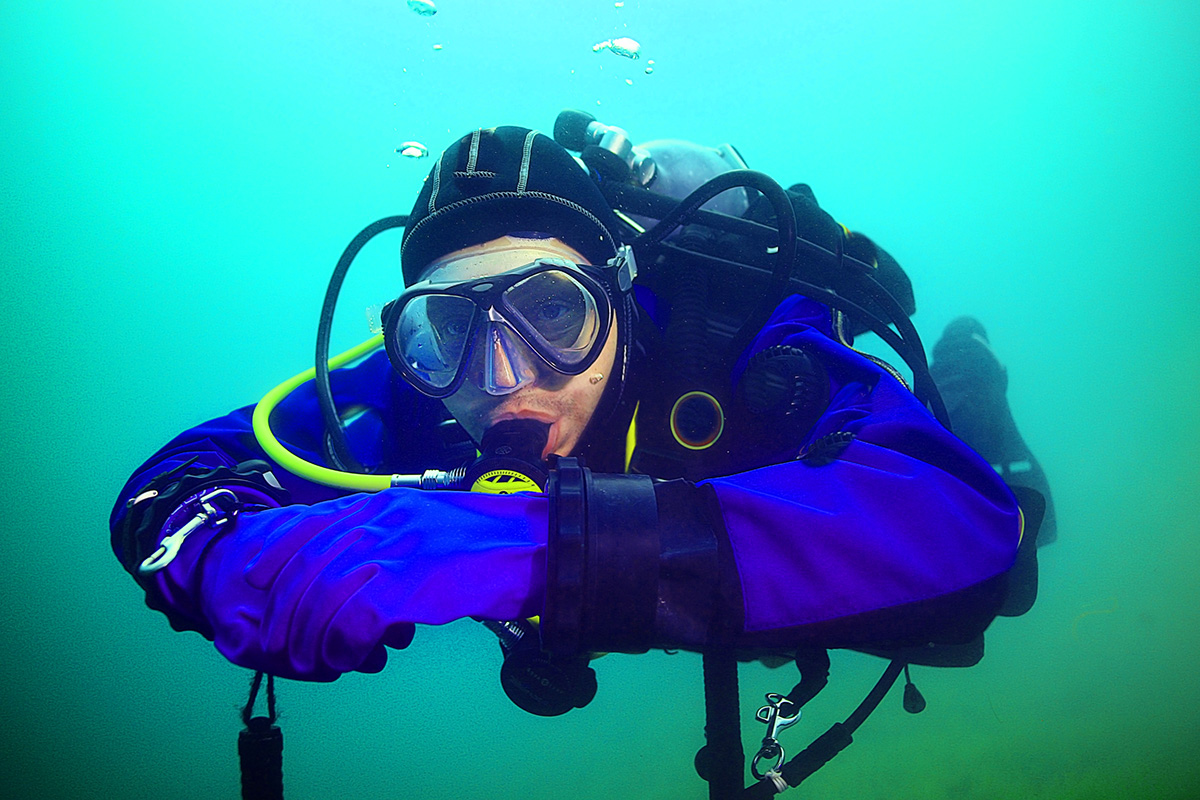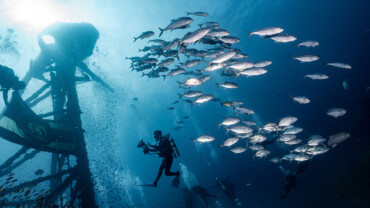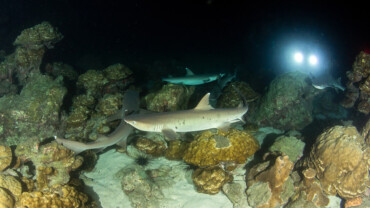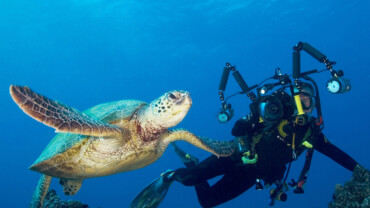A Skill Every Diver Should Hone
If you’ve ever seen a diver glide effortlessly through the water like they’re part of the ocean itself—perfectly balanced, barely using air, and leaving no trail of silt in their wake—chances are they’ve mastered buoyancy control. That’s the heart of the PADI Peak Performance Buoyancy (PPB) course.
Whether you’re freshly certified or you’ve logged dozens of dives, refining your buoyancy is one of the most rewarding steps you can take in your diving journey. This course isn’t just about looking cool underwater—it’s about control, safety, efficiency, and making every dive feel like second nature.
What You’ll Learn
The Peak Performance Buoyancy course zeroes in on the fine-tuned control that separates confident divers from cautious ones. You’ll learn how to:
- Achieve neutral buoyancy with minimal effort
- Hover in any position—horizontal, vertical, even upside down
- Use breath control for subtle, efficient depth changes
- Trim your gear to improve streamlining and movement
- Fine-tune your weighting for better control and less drag
- Improve finning techniques to reduce disturbance to the environment
- Move through the water efficiently, using less energy and air
Why It’s Important
Perfecting your buoyancy isn’t just about comfort—it makes you a better, safer, and more responsible diver:
- Air Conservation: Use less air, extend your bottom time
- Environmental Protection: Avoid damaging coral or stirring up the bottom
- Energy Efficiency: Less effort means longer, more enjoyable dives
- Dive Confidence: Control your body in the water with precision
- Photography or Videography: Get steadier shots without crashing into the reef
Course Structure
This specialty course is flexible and fun. It includes:
- Knowledge Development: Quick review of buoyancy basics with helpful new tips
- Two Open Water Dives: These dives focus solely on buoyancy control exercises
- One-on-One or Small Group Coaching: You’ll get direct feedback on your positioning, gear trim, and breathing techniques
Course Highlights
- Conducted in a calm, open water environment (often on a reef or sandy bottom)
- Playful, skill-based approach—expect games and challenges like hovering without movement or swimming through hoops
- Real-time coaching from your instructor to help you make adjustments immediately
- An opportunity to test and adjust your own gear setup for optimal balance
Who It’s For
This course is ideal for:
- Open Water Divers who want to level up fast
- Divers returning from a break who want to refresh their skills
- Advanced students looking to add specialties and grow toward Master Scuba Diver
- Underwater photographers/videographers seeking better control and position
- Anyone who’s ever felt too heavy, too floaty, or like they’re fighting the water
Requirements
Before enrolling, you need:
- Minimum certification: PADI Open Water Diver (or qualifying equivalent)
- Minimum age: 10 years old
- Equipment: Standard scuba gear (BCD, regulator, mask, fins, etc.)
- It’s best to use your own equipment if possible so you can fine-tune it
- Your instructor may add a surface marker buoy (SMB) or other tools for certain exercises
Course Duration
- Typically completed in 1 day (two dives)
- Can be combined with other training dives (like Advanced Open Water)
- Very customizable—some instructors offer longer versions with extra practice
Practical Benefits
Here’s how PPB helps in the real world of diving:
- More Enjoyable Dives: You’ll feel more in sync with the underwater world
- Better Air Management: Stay down longer and get more out of each tank
- Smoother Group Dives: Less up-and-down means better buddy coordination
- Less Weight to Carry: Once you dial it in, you’ll likely shed unnecessary lead
- Conservation-Minded Diving: You’ll have the control to hover over reefs, not land on them
Next Steps After PPB
Once you’ve nailed buoyancy, you’re in a great position to take on more advanced skills. Many divers follow up with:
- Underwater Navigation (for better orientation)
- Advanced Open Water Diver (PPB can count as one of your adventure dives)
- Diving specialties like wreck, deep, or night diving, where control is critical
- Master Scuba Diver rating, if you’re collecting specialties
Final Thoughts from an Instructor
Here’s the truth: almost every diver I’ve ever trained—myself included—has room to improve buoyancy. And every diver who’s taken this course has walked away feeling more comfortable, more confident, and more connected to the water. The skills you develop in PPB don’t just stay in your logbook—they show up on every single dive you make from here on out.
So if you’ve ever kicked up a cloud of sand, struggled to stay still for a photo, or felt like you’re bouncing between the surface and the seafloor, this course is your solution. It’s not about being perfect. It’s about being in control—and that’s a pretty great feeling.





